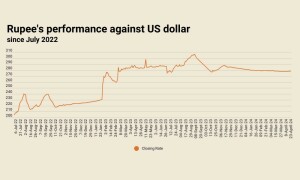September 2021 power generation statistics show another monthly high. September generation went up to 14 billion units – which is best compared to September 2019 – and the growth is a rather muted 3 percent. The 1QFY22 year-on-year grid generation growth at 7.4 percent, can at best be termed decent, especially considering the fact that more measures have been taken to entice industrial electricity consumption. The gradual shift from captive power to grid is also at play, which puts the 7.5 percent growth in perspective.
The 12-month moving average is now closing in on 11 billion monthly units – up 8 percent year-on-year. The growth was lost for a good 18-20 months in 2019 and 2020 and has only now started to show some pace. Beyond the natural rate of growth, will the government initiatives to encourage electricity consumption, especially in non-peak season yield results is the key to future growth. A big part of that answer rests with how electricity is priced going forward.

This is where a look at the monthly Fuel Charges Adjustment (FCA) likely to be approved by the regulator offers good indication. A record Rs2.65/unit or thereabouts will be added with respect to September power generation in the November power bills. For context, the average monthly FCA is 62 paisas in the last 12 months. This is despite a significant upward revision of 66 percent in reference fuel cost component from last year.
No prize for guessing thermal power generation has become an expensive affair around the world in the last two months. To Pakistan’s relative advantage, the indigenous resources still constitute a sizeable chunk of the baseload. But there is little you can do when faced with multifold rise in imported fuel prices. Getting the house in order in terms of fixing the system constraints to allow more efficient plants to run optimally over the more expensive ones, is part of the little that can be done. But that is for another day.

With the base tariff likely to go higher from November 1, and monthly FCAs in all likelihood well over Rs1-1.5/unit for a few more months, it is difficult to see how higher consumption will see the light of the day, even at discounted incremental consumption tariffs. It remains to be seen if industrial tariffs are treated any differently in the latest base tariff revision, which could be a critical determinant of how fast the demand goes up.
The government has, in the past delayed notifications for monthly FCAs and later clubbed it with lower FCAs to mitigate the impact. That seems highly unlikely as the IMF pressure is obvious, and also because no one knows when will the monthly FCA adjustment will next be on the lower side.























Comments
Comments are closed.